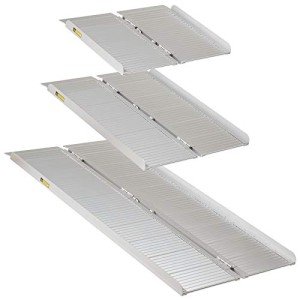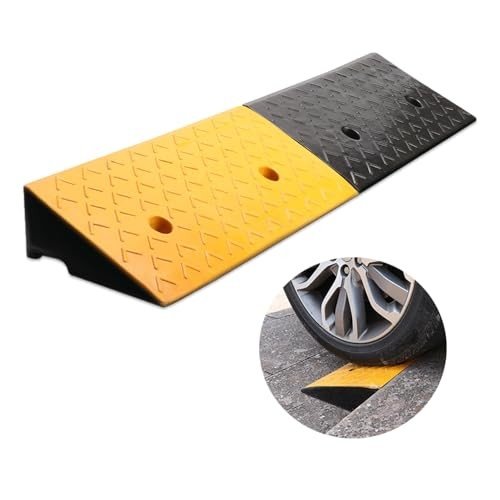
Mobility Ramps
FollowOverview
-
Founded Date May 3, 1934
-
Sectors Construction / Facilities
-
Posted Jobs 0
-
Viewed 4
Company Description
9 Lessons Your Parents Taught You About Wheelchair Ramps For Homes
Wheelchair Ramps for Homes: A Comprehensive Guide
Creating a barrier-free environment in a home is essential for guaranteeing convenience and availability for homeowners and visitors with mobility difficulties. Wheelchair ramps are an important component of this effort, allowing simpler access to buildings and making everyday life more manageable for individuals with specials needs. This post dives deep into the importance of wheelchair ramps, their types, factors to consider for installation, and upkeep tips.
Why Are Wheelchair Ramps Important?
Wheelchair ramps serve an important function in enhancing mobility. They are particularly important for:
- Accessibility: Ramps enable people who use wheelchairs, walkers, or have trouble climbing up stairs to go into and leave structures efficiently.
- Independence: With proper ramp access, people can walk around their surroundings independently, resulting in enhanced quality of life.
- Security: Ramps lower the risk of mishaps associated with stair climbing for people with mobility difficulties.
Kinds Of Wheelchair Ramps
When considering Wheelchair Ramps For Homes, https://www.fredricbaumgard.top/,, it’s vital to comprehend the different types offered. Here’s an introduction:
| Type of Ramp | Description | Pros | Cons |
|---|---|---|---|
| Portable Ramps | Lightweight ramps that can be moved as needed. | Easy to save and transfer. | Limited length; may not appropriate for all homes. |
| Permanent Ramps | Built to be a long-term component of a home, typically made of concrete or wood. | Durable and can accommodate any height. | More expensive and require professional installation. |
| Modular Ramps | Sectional ramps that can be put together and personalized on-site. | Customizable to fit particular needs. | May require assembly and carry higher costs. |
| Threshold Ramps | Designed for little rises, such as entrances or limits. | Ideal for basic transitions. | Limited application for higher elevations. |
| Swimming pool Ramps | Used to offer access into pool. | Great for leisure spaces. | Not appropriate for all environments. |
Key Considerations for Installation
When preparing to set up a wheelchair ramp in a home, several aspects need to be taken into consideration:
-
Location and Space: Assess the area where the ramp will be installed. Ensure adequate space for the ramp without blocking paths.
-
Slope Ratio: According to the Americans with Disabilities Act (ADA), the recommended slope for a wheelchair ramp is 1:12. This indicates that for each inch of height, there must be at least 12 inches of ramp run.
-
Materials: The products used for constructing ramps can substantially affect their safety and toughness. Common materials consist of:
- Wood
- Aluminum
- Concrete
- Fiberglass
-
Building regulations: Always examine regional building codes and guidelines, which may determine specific requirements for ramp design and setup.
-
Expense: Budgeting for ramp setup can vary extensively depending upon the type and materials. Costs can range from a couple of hundred to several thousand dollars.
Maintenance of Wheelchair Ramps
To ensure longevity and safety, routine upkeep of wheelchair ramps is a must. Here are some necessary upkeep ideas:
- Inspect Regularly: Check for any loose bolts, cracks, or damages every couple of months.
- Tidy the Surface: Keep the ramp surface clear of particles, snow, and ice to prevent slipping.
- Examine for Rust: For metal ramps, keep an eye out for rust and deal with any spots appropriately.
- Repaint if Necessary: Ensure that any painted surfaces are maintained to improve visibility and prevent wear.
Regularly Asked Questions (FAQ)
1. Do I require a license to install a wheelchair ramp?
Yes, in a lot of areas, you will need an authorization to construct a long-term wheelchair ramp. It’s necessary to check local regulations.
2. Can I build my own wheelchair ramp?
Yes, DIY ramps are an option, especially for portable and threshold ramps. Nevertheless, for irreversible ones, it’s advisable to seek advice from a professional.
3. How steep can a wheelchair ramp be?
For residential ramps, a slope of 1:12 is recommended; however, steeper slopes may be allowable for short distances.
4. How wide should a wheelchair ramp be?
The ADA advises a minimum width of 36 inches for wheelchair ramps to allow sufficient area for maneuverability.
5. Can wheelchair ramps be set up outside?
Definitely! Lots of wheelchair ramps are designed for outside usage. However, they need to be built with weather-resistant products to stand up to the aspects.
In summary, wheelchair ramps are vital in developing an accessible environment in your home. By understanding the various types, installation factors to consider, and upkeep requirements, house owners can ensure that their ramps serve their desired function effectively. Whether it’s through enhancing self-reliance or guaranteeing safety, purchasing a wheelchair ramp could considerably enhance the quality of life for those facing mobility obstacles. It’s not simply about functionality– it’s about cultivating inclusivity and creating areas that everyone can browse with ease.




